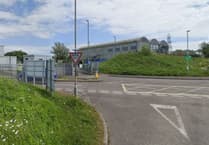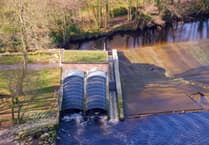The Government is currently reviewing its investments in biomass energy and is due to publish a new Biomass Strategy. Selaine Saxby, Conservative MP for North Devon, wrote in this week’s ‘Politics Home’, the magazine of the Houses of Parliament, “If we are going to achieve our climate goals and lower energy bills, we need to rethink our use of biomass power. It is no longer cheaper than new wind or solar power, and experts increasingly doubt its green credentials. Instead, we need to make better use of waste wood and focus on building genuine and cheap renewables.”
The biomass burnt in power stations to generate electricity is made from timber and waste wood in the form of woodchips. Trees absorb CO2 as they grow. Burning biomass releases this CO2. But if it is offset by replanting trees which will take up the same amount of CO2, the biomass is carbon neutral. If burnt in a power station, it is possible to go one step further and trap the CO2 released and bury it deep underground, this is called Biomass with Carbon Capture and Storage (BECCS). This aims to achieve negative emissions, as the CO2 released through burning the biomass is both permanently stored underground and offset by a new crop of growing trees. But if there is no carbon capture and replacement trees are not successfully grown, burning wood emits more carbon than burning coal.
So what are the challenges of biomass? The first is the difficulty of ensuring that all the CO2 is really recaptured. The carbon released from the forest soil when exposed can be as great as that stored in the trees. Mature trees absorb more carbon than young trees, so the newly planted trees will take many decades to absorb the CO2 released by the burning of their predecessors. Indeed trees planted now will absorb little carbon before 2050, and this delay is critical in the race to cut emissions this decade to limit global warming to 1.5 degrees.
And the emissions caused through the use of heavy machinery for felling, logging and chipping, and then the transport of the woodchips, usually by ship from North America or from Eastern Europe, will not be offset either by the growing trees or carbon capture. Putting all these CO2 losses together, scientists at London university, UCL, warn that “Overall, the risk is that they will outweigh the carbon sequestration benefit that BECCS set out to provide”.
The second challenge is the impact on nature and whether the production of biomass is sustainable or instead simply driving deforestation. As we rely on imported wood pellets, it is difficult to ensure we only use sustainable sources. Drax power station in Yorkshire, our largest biomass power plant and currently the largest emitter of CO2 in the country, already consumes over 50% of the global wood pellet market according to UCL. A recent BBC Panorama programme exposed that the biomass for Drax did not come just from waste wood or trees from purpose-grown timber plantations, but from the clear-cutting of biodiverse old growth forests in Canada. Similarly, here in Europe, Sweden and Poland have both been criticised for logging old growth forests for the wood pelleting industry.
Even if the power stations were to be run on truly waste wood from the timber industry, this could be put to better use than burning it for electricity. It can be made into wood panelling for the construction industry and continue to store the carbon absorbed by the trees. The UK Government’s Climate Change Committee has said that we should be prioritising these uses that keep the carbon locked up.
The final challenge is the cost. The UK Government has spent £6bn subsidising the conversion of old coal power plants to burn biomass. To install BECCS technology, it is estimated it will require another £30bn of subsidies – the equivalent of £500 per person in the UK for a technology that has never been proven at scale. Despite this, Ministers are currently considering giving biomass plants new subsidy contracts. According to Ms Saxby, this “would sign up the energy consumer to provide a further 15 years of potential subsidies for this expensive, environmentally questionable energy source. It should therefore be ruled out.”
Other renewables like wind and solar power have become much cheaper, but we have not seen similar cost reductions in biomass power. Ms Saxby concludes, “Ministers should avoid giving out new subsidies and use the upcoming Biomass Strategy to set out a cautious approach to bioenergy with carbon capture and storage [BECCS], which could cost the taxpayer and our environment dearly.”
It is difficult to see why the burning of biomass is being allowed to continue, and to justify it being supported by taxpayer subsidies when genuine renewables are receiving no subsidies. Conservative MP, Ms Saxby, judges that “this power source is eye-wateringly expensive and a less green alternative to other genuine renewables”.





Comments
This article has no comments yet. Be the first to leave a comment.